Last Saturday, Navy Pier, Chicago: Pay your money, get your wristband, and pretty soon you can board the likes of this.
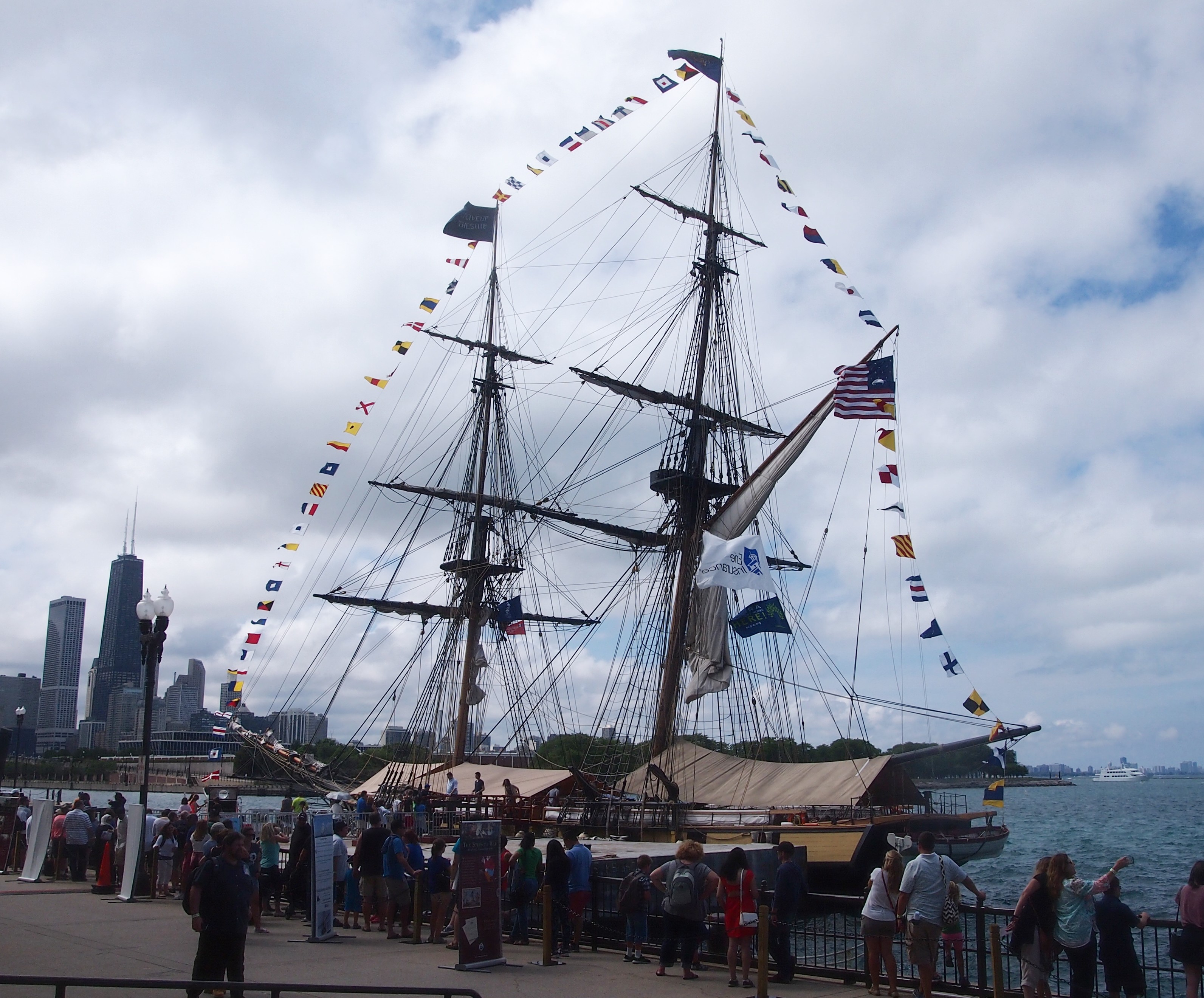 Even better, this.
Even better, this.
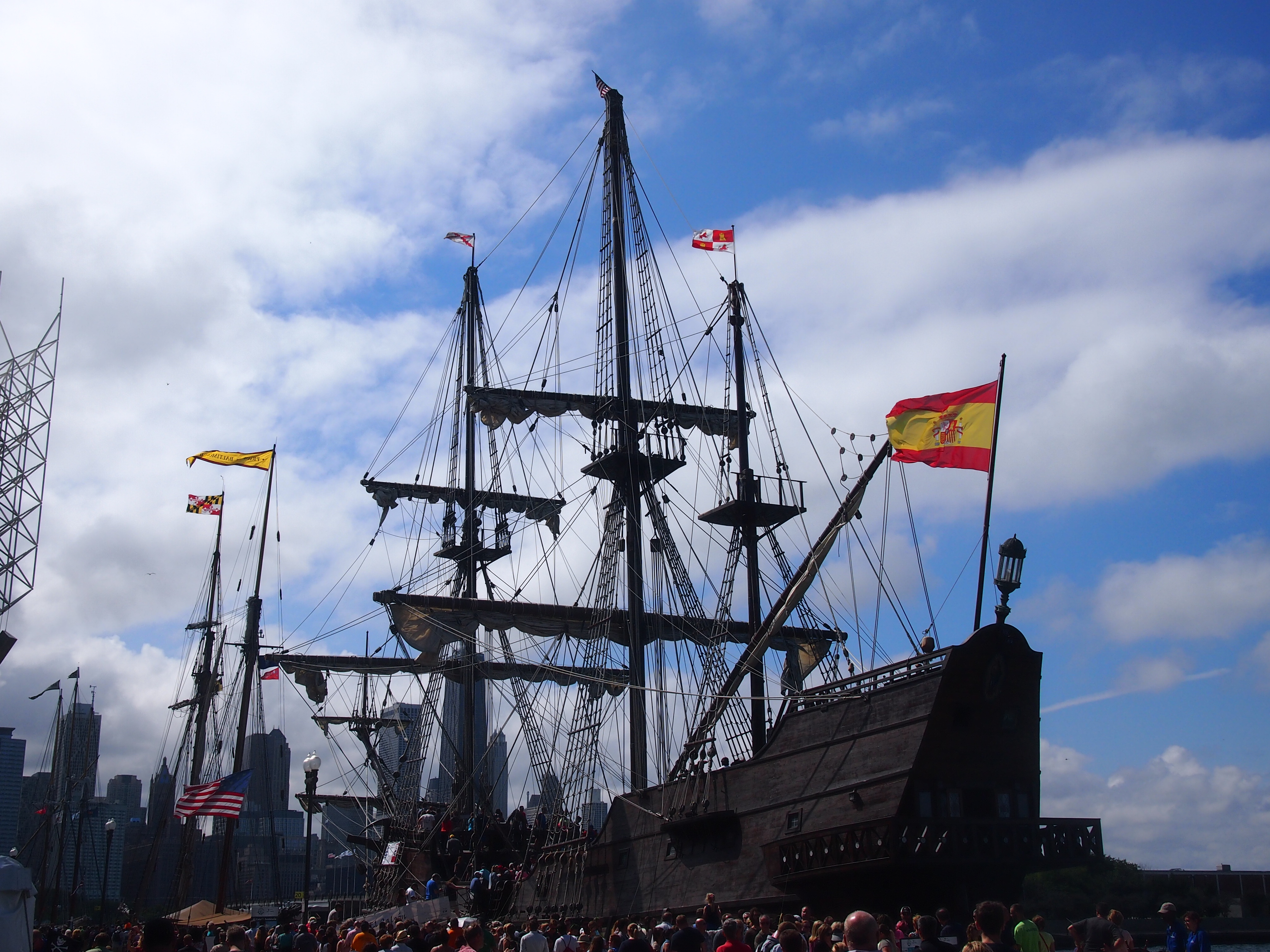 The first ship is brig Niagara out of Erie, Pa., while the next one is El Galeón Andalucía, out of Cadiz, Spain.
The first ship is brig Niagara out of Erie, Pa., while the next one is El Galeón Andalucía, out of Cadiz, Spain.
Every three or four years, Chicago hosts a tall ships festival. The formal name of this year’s event was the Pepsi® Tall Ships® Chicago 2016, complete with registered trademarks symbols flying like pennants. I’m sure PepsiCo paid big bucks for the naming rights, but I can’t help feeling that the drink of choice among seafarers on tall ships should be rum. Bacardi ought to look into it.
Pepsi® Tall Ships® Chicago 2016 is part of a larger movement of sailing ships through the Great Lakes this year, known as the Tall Ships Challenge®. (There’s that trademark again, but I refuse to use all caps.) The event is organized by the Tall Ships Foundation and includes visits to Great Lake ports this summer, as well as races between the participants.
Even now, the ships are on their way to Green Bay and then Duluth. Next year, other ships will visit Atlantic ports, and presumably after that Pacific ports, and so on. Guess the visits count not only as seafaring — an end unto itself — but are also for publicity and fundraising. The tall ships probably cost a lot to maintain, now that the supply of cheap Jack Tar labor isn’t what it used to be.
The participating ships were docked at Navy Pier. All were available to board and look around, while some offered rides on the lake for an extra (and fairly high) fee. All together, we boarded eight of the ships, or more than half: the Niagara and the Andalucía, but also the Pride of Baltimore II, Denis Sullivan, Madeline, Mist of Avalon, Playfair, and the Draken Harald Hårfagre.
Coolest of all was the galleon. Everybody seemed to feel that way, since that ship had the longest line to board. It was worth the wait of about 30 minutes. How often do you have the chance to board a Spanish galleon and look around? Not often.

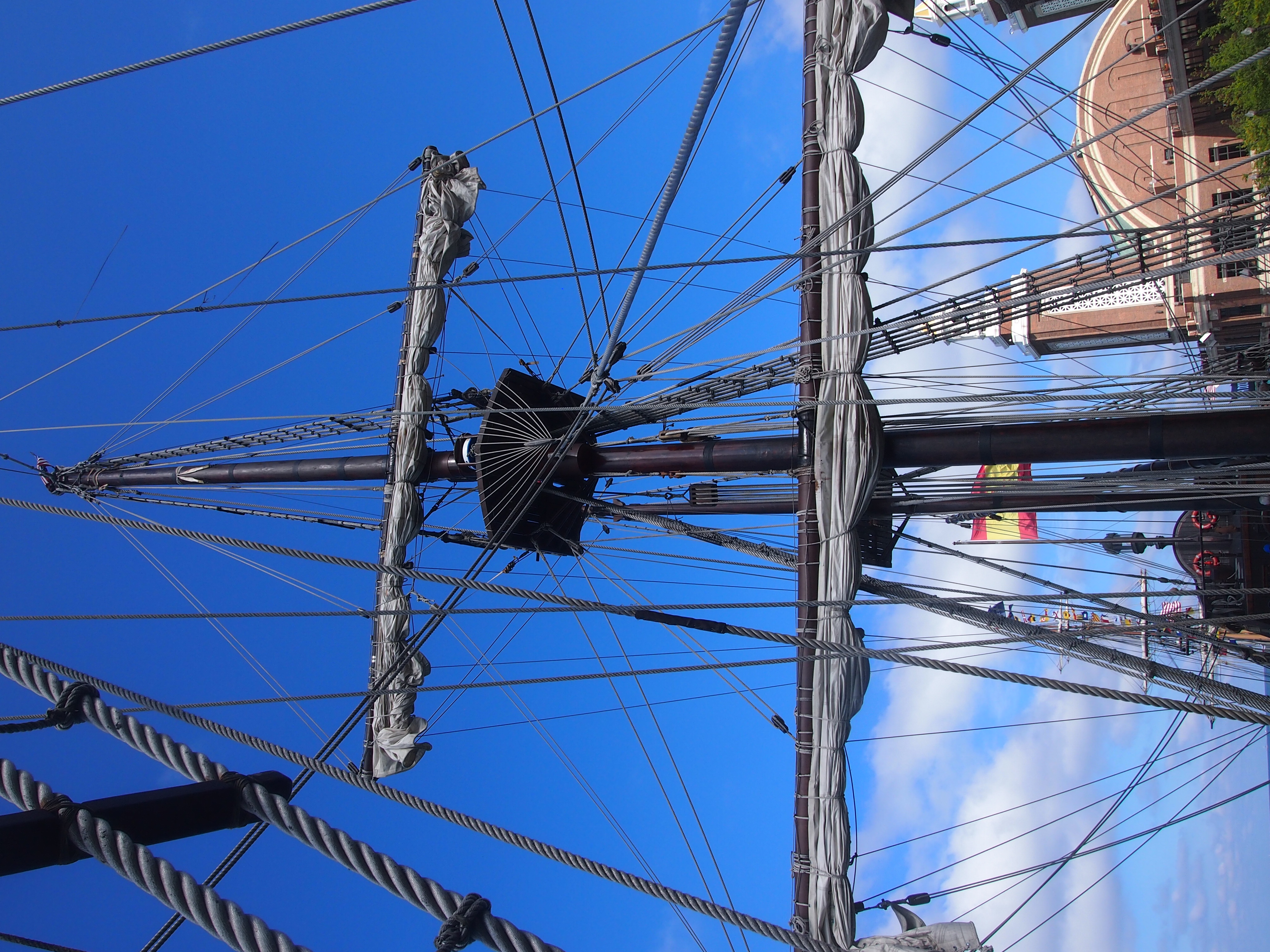
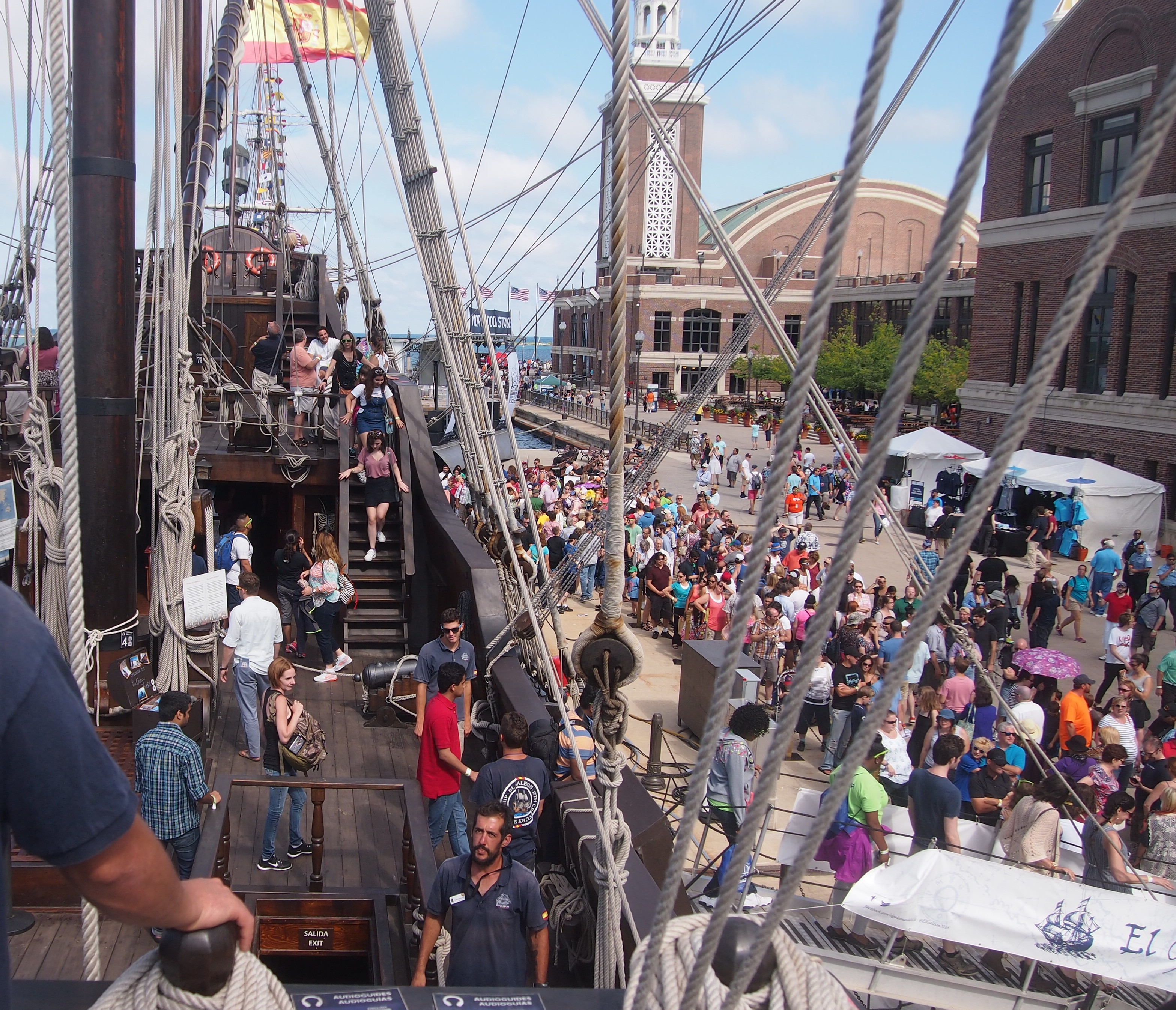 The vessel, completed only in 2010, is a 170-foot, 495-ton wooden replica of a galleon that was part of Spain’s West Indies fleet, or, as Wiki puts it: “El Galeón Andalucía es la reproducción de un galeón español del siglo XVII.”
The vessel, completed only in 2010, is a 170-foot, 495-ton wooden replica of a galleon that was part of Spain’s West Indies fleet, or, as Wiki puts it: “El Galeón Andalucía es la reproducción de un galeón español del siglo XVII.”
The other ships had their interests as well, including the Niagara and the Pride of Baltimore II —
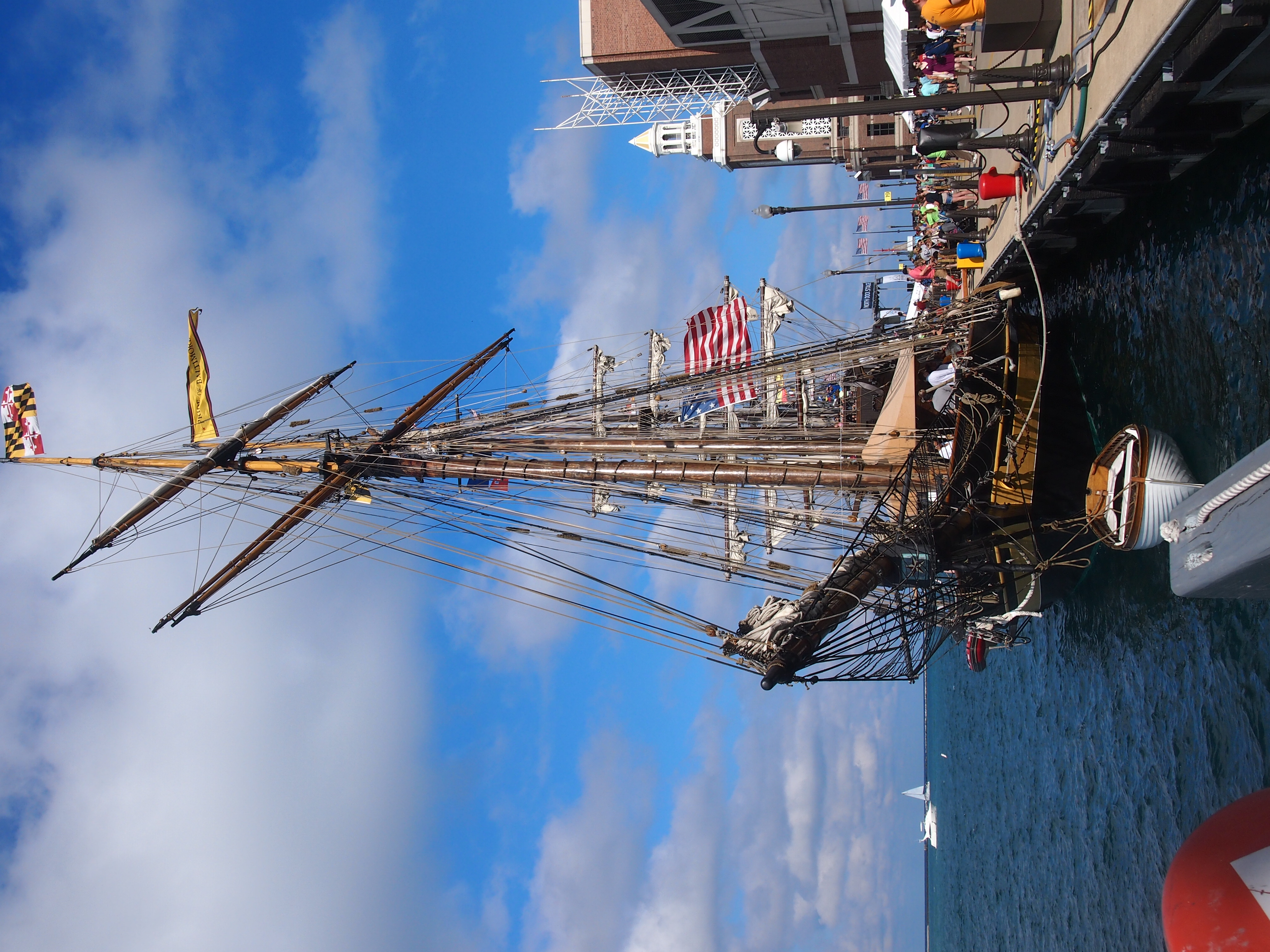 — and especially the Draken Harald Hårfagre, a re-creation of a Viking ship. The light was wrong for me to get a good side image of the vessel, but there are plenty of pictures of her.
— and especially the Draken Harald Hårfagre, a re-creation of a Viking ship. The light was wrong for me to get a good side image of the vessel, but there are plenty of pictures of her.
Apparently there was some kind of kerfuffle about the Draken Harald Hårfagre in U.S. Great Lakes waters. Something about leaving behind a swath of destruction, pillaging as they went by — Cleveland, Detroit, Mackinaw City, Green Bay… No, that wasn’t it.
The ship’s problems are more pedestrian than that: not being able to pay a pilotage fee. The Sun-Times reported before the tall ships event: “While docked in Bay City, Michigan, the crew of a 115-foot vessel found out last week that they were required by law to have a pricey navigational pilot on board while traveling the Great Lakes in U.S. waters.”
Maybe that’s an onerous requirement. I’m not competent to say. But you’d think that the owners of the ship might have known about it before entering U.S. waters. Anyway, apparently they raised enough scratch to get to Chicago, and I’m glad. It was another cool ship to tour.
In fact, we got a guided tour by one of the crew, the only ship to provide that.
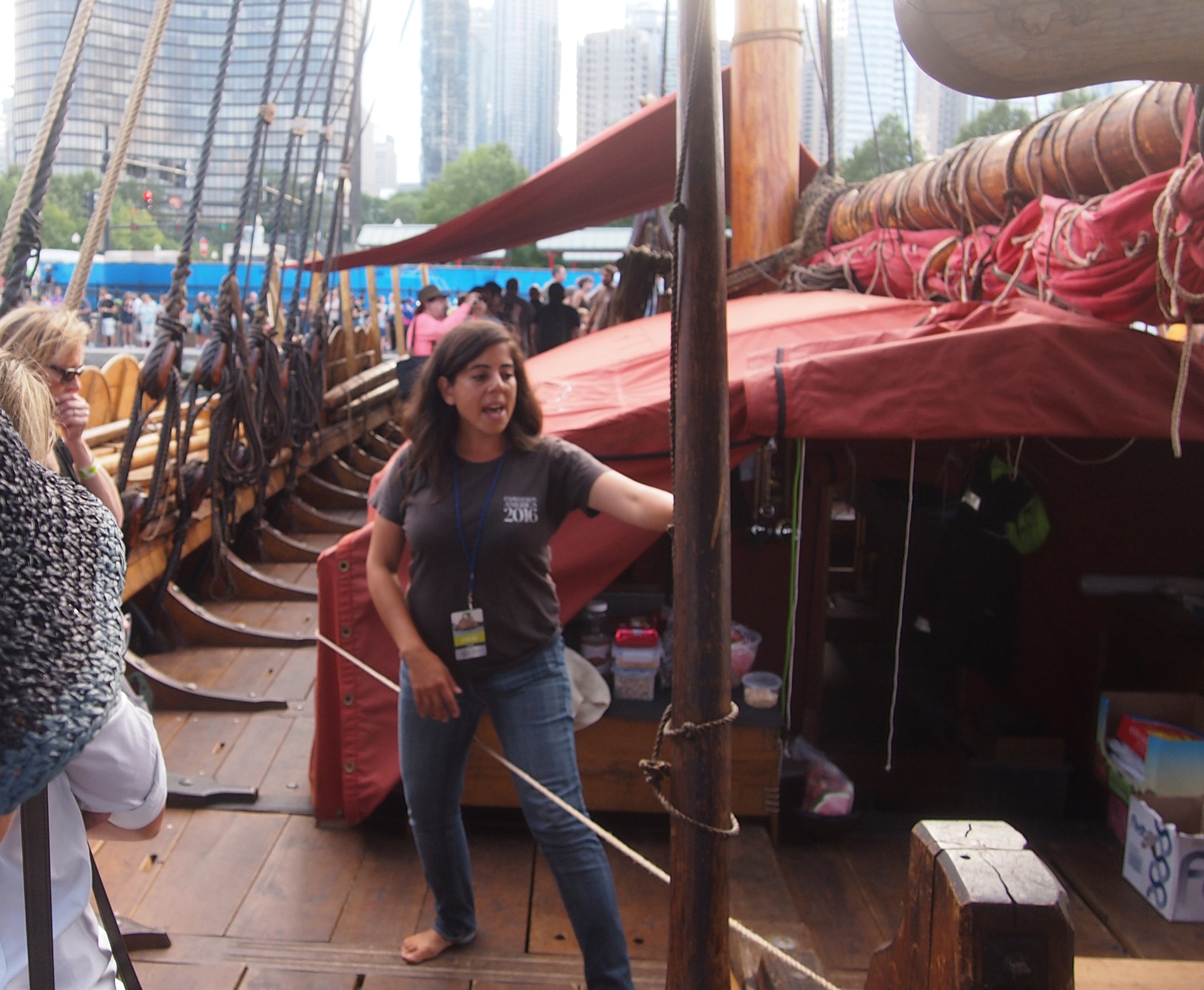 As a 21st-century replica, certain things about the ship would have been unfamiliar to, say, Erik the Red. Such as the hidden diesel engine, or the hidden stove and toilet aboard. Modern safety regs don’t allow as many crew as the ship would need to actually row it, so the oars are mostly for show, though the crew uses the sails as propulsion if it all possible. Also, in the spirit of modern Scandinavian egalitarianism, the crew’s half men and half women.
As a 21st-century replica, certain things about the ship would have been unfamiliar to, say, Erik the Red. Such as the hidden diesel engine, or the hidden stove and toilet aboard. Modern safety regs don’t allow as many crew as the ship would need to actually row it, so the oars are mostly for show, though the crew uses the sails as propulsion if it all possible. Also, in the spirit of modern Scandinavian egalitarianism, the crew’s half men and half women.